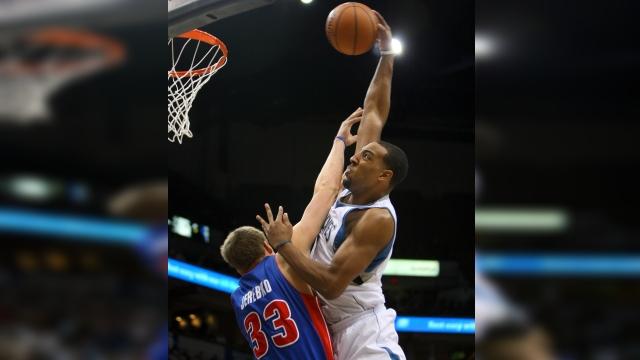Ed Note: Please welcome guest columnist Michael Pina. Michael volunteered to write an article for us on Derrick Williams, and how he must seize the day with Love out indefinitely. Do enjoy.
Is Derrick Williams the next Michael Beasley? Comparisons are beginning to take form. Are they fair?
After an incredible freshman campaign at Kansas State University that was favorable to Kevin Durant’s tenure at Texas, Beasley was taken one slot after Derrick Rose in the 2008 NBA draft. He’s currently on his third team in five years, and has yet to materialize into the consistent, All-Star caliber scorer many pegged him to be.
Williams was selected by the Minnesota Timberwolves three years later, right after the Cleveland Cavaliers used the first overall pick to replace LeBron James with Kyrie Irving. The parallels between Beasley and Williams are heavy. Skewed, but heavy.
Derrick Williams is 21 years old and averaging 17.6 points and 8.4 rebounds per 36 minutes in his second NBA season. That sentence, taken out of context and with absolutely no other noteworthy bits of information, makes him look like a really good player. A young productive forward who appears to be fitting in splendidly as an integral piece on an NBA team’s never ending puzzle.
In his second season, Williams’ PER has increased along with his usage percentage. Another suggestion that he’s adjusting nicely, taking on additional responsibility and handling the daily rigors of professional basketball with a smile on his face.
Unfortunately, none of this is true. In reality, Williams is a hesitant lottery pick who’s continuously struggled adapting to bigger, faster opposition.
Unlike Beasley, Williams’ trouble is rooted in the fact that the team that selected him already had a young, growing All-NBA forward they were ready to build around. Unless Williams is traded, starting at power forward (probably where he belongs) is out as a long term option.
Going back to Love’s first injury before the season even started, Williams has swayed from legendarily awful (a two point, 0-10 shooting performance against the Chicago Bulls in early November), to brilliant flashes (a 23 point, seven rebound, four block explosion against the Golden State Warriors six days later).
He’s logged over 20 minutes in 12 games this season and scored at least 10 points in six of them. That’s the bare definition of inconsistent. For his career, he has three double-doubles in 94 games.
But how well Williams plays with Love out of the lineup can only be seen as a good thing by the Timberwolves in the sense that it increases his trade value. Moving forward, Williams ability to produce alongside Love is a determining factor in predicting how much longer his Timberwolves tenure will last.
Williams and Love have shared the court for just 29 minutes this season. The sample size is hardly worth looking at, but in case you’re curious it’s been brutal, with Minnesota netting a minus-16.1 points per 100 possessions point differential. They’ve seriously struggled scoring points.
Last season the two shared the court for 699 minutes, the ninth most common pairing Minnesota utilized. These lineups could score, averaging two more points per 100 possessions than Minnesota’s average—mostly by taking more three-pointers and free-throws than average—and they played at a slightly faster pace.
Overall, most of Williams’ offense this season has come from spot-up jumpers and baskets in transition, per Synergy. However, the truth is, in transition, he hasn’t been nearly as explosive as everyone thought he’d be when Blake Griffin comparisons were being thrown around two years ago (he’s currently making less than half of his shots at the rim, which is a little embarrassing). He just isn’t nearly as capable of a ball-handler.
Despite his hefty build, Williams rarely sets solid screens, preferring instead to either slip towards the basket (looking like a shorter Amar’e Stoudemire) or pop out behind the three-point line (where he’s shooting 37.7%).
Watching Williams this season can best be compared to observing an Oscar nominated actor on a small black and white television. You’ve been promised creativity, flair, and spontaneous excitement, but how you’re watching it unfold is incredibly frustrating.
Let’s say Williams heads into All-Star weekend on a monstrous tear, Godzilla-ing himself on an unsuspecting crop of opposing forwards. Should the Timberwolves choose to cash out when his value hits its peak? Or do they hang on to the potential, and hope to the heavens their man turns into the player Michael Beasley could not? It’s a pivotal question for a franchise that’s finally reached the point where pivotal questions are worth answering.
Michael Pina is a writer for ESPN’s TrueHoop Network and ScoreBig.com. Follow him on Twitter: @MichaelVPina.

